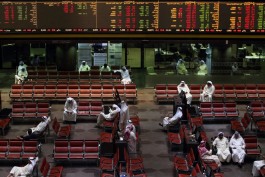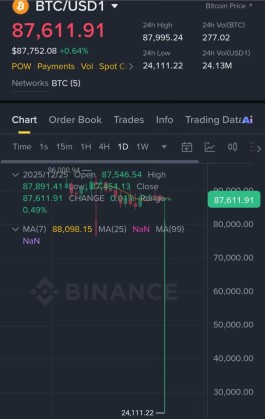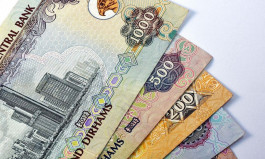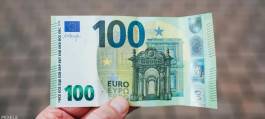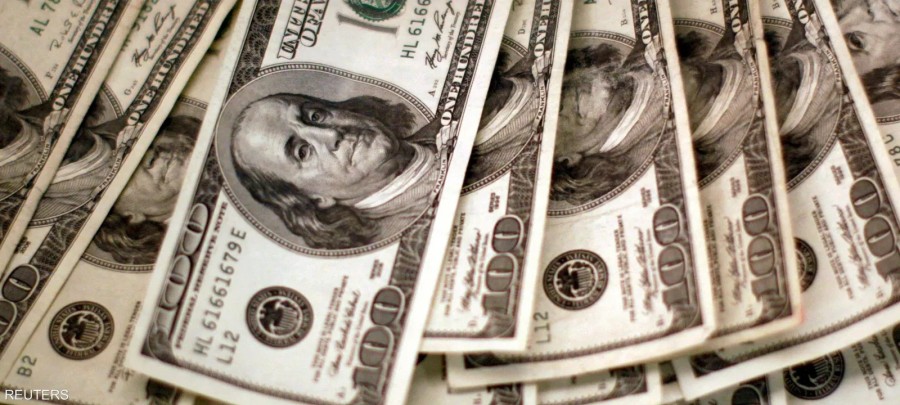The US dollar edged up slightly on Monday, recovering from last week's losses, although sentiment remains cautious ahead of key inflation data and amid concerns about the health of the US regional banking sector.
At 11:15 a.m., the dollar index, which tracks the greenback's performance against a basket of six other currencies, rose 0.1% to 98.270, after last week's biggest five-day decline since late July.
US CPI data coming
The US dollar steadied on Wall Street's rebound despite a sudden return of market scrutiny of US regional banks, after two lenders - Zions and Western Alliance Bancorp - reported problems with their fraudulent loans.
Concerns about the health of regional banks and broader credit quality in the US remain very central to FX markets, analysts at ING said in a note.
Indications that the lending problems are not extending beyond Zions Bancorp and Western Alliance may provide some additional comfort to the dollar, but it may not be enough to fully price in concerns about the underlying health of the credit market and recoup all losses for the US dollar.
Elsewhere, the US Bureau of Labor Statistics is expected to release its delayed September Consumer Price Index on Friday, despite the ongoing US government shutdown.
ING said: We are in line with the consensus forecast for a core reading of 0.3% month-on-month, which should support a 25 basis point cut by the Federal Reserve next week. Barring significant deviations from consensus, the inflation release should not have a significant impact on foreign exchange, as labor markets play a more important role in interest rate expectations.
The euro stabilizes as the French political situation calms.
In Europe, the EUR/USD pair rose 0.1% to 1.1659, with the single currency stabilizing after a degree of calm returned to French politics, where Prime Minister Sébastien Lecornu survived two no-confidence votes last week after agreeing to postpone pension reform.
ING said: The calm on the French political front has allowed the euro to recover slightly, but it's difficult to feel completely comfortable with France. Standard & Poor's cut the country's rating from AA- to A+ in an unscheduled move on Friday.
German producer prices fell 0.1% month-on-month in September, down from a year earlier of 1.7%, indicating that underlying price pressures remain very subdued in the eurozone's largest economy.
The GBP/USD pair fell 0.1% to 1.3421, with the pound largely steady ahead of the November budget.
ING said: Expect a steady flow of information about the content of the November Budget in the coming weeks. This appears to be a double-edged sword for the pound. Any concerns about fiscal sustainability will weigh on UK gilts and spill over into the pound, while higher taxes will dampen growth and increase the chances of an early Bank of England easing.
Yen weakens as Takaichi rises
Elsewhere, the USD/JPY pair rose 0.1% to 150.81, with the Japanese yen weakening slightly amid renewed bets that Liberal Democratic Party leader Sanae Takaichi will be appointed the country's prime minister.
Takaichi is widely viewed as a fiscal dove, signaling more government spending and easier financial conditions in the coming months. She is also expected to oppose further interest rate hikes by the Bank of Japan, which is scheduled to decide on the matter next week.
The USD/CNY pair fell slightly to 7.1242, after Q3 GDP data came in slightly above expectations.
GDP grew by 4.8% year-on-year, beating expectations of 4.7% but slower than the 5.2% growth in the second quarter. This was also China's weakest GDP reading since the third quarter of 2024.
However, China's GDP growth year-to-date has remained above Beijing's 5% annual target, with exports the main driver, while headwinds from weak private spending and investment remain.
The AUD/USD pair rose 0.1% to 0.6501, as the Australian dollar, a gauge of Asian risk appetite, advanced.










